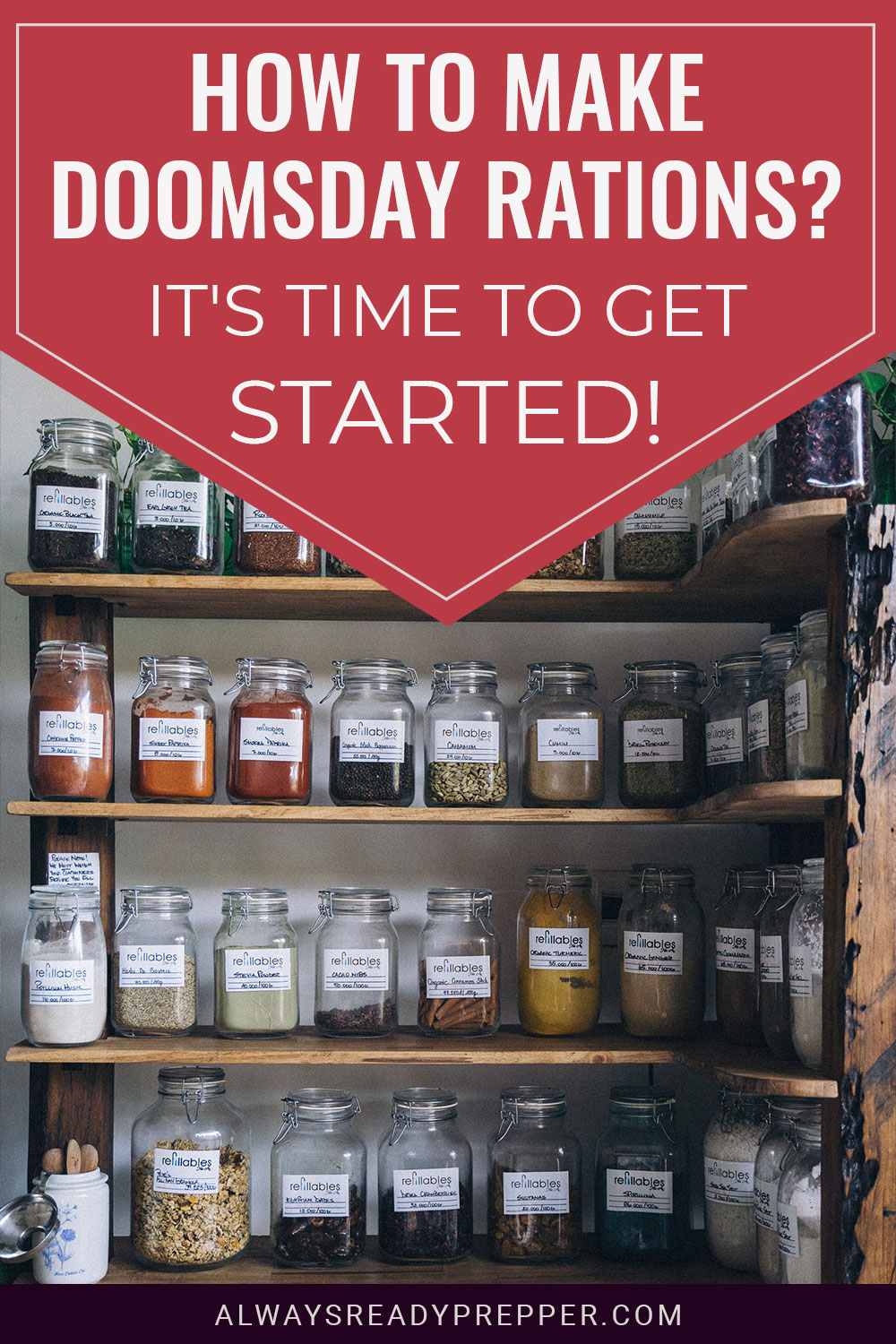How To Make Doomsday Rations? It’s Time To Get Started!
We may earn commissions for purchases made through links on our site. Learn more on our about us page.
Doomsday rations are calorie-dense foods with long shelf lives. You can purchase them from any major retailer, but making them yourself is cheaper.
Although they have a long shelf life, they eventually expire, and it’s far more affordable to prepare a new batch every 2 to 5 years rather than heading to Costco.

How to Make Doomsday Rations?
Remember that doomsday rations are meant for survival, so you’re unlikely to thrive off them for months or years at a time. A popular, easy-to-make doomsday food is “doomsday crackers,” which are simply cornmeal, water, and salt.
Recipe:
2 cups cornmeal
1 cup water
Two teaspoons salt
Mix thoroughly, kneading the dough until combined. Roll it out onto some wax paper and then bake until golden brown. Once they have the consistency of crackers, allow them to cool and then place them into zip lock bags or another airtight container.
Variations of doomsday crackers have been around for centuries, sometimes made with different flours and with or without salt.
They’re also called survival crackers, hardtack, and ship’s biscuits. To eat them, sailors and soldiers would dip them into a stew or morning coffee to soften them.
Other items to include:
Rice
Beans
Water
Peanut Butter
Liquor
Canned Meats
Salt
Honey
Maple Syrup
Powdered Milk
Water is especially important because, without it, it doesn’t matter if you have enough doomsday crackers to last ten years. Without water or another source of fluids, your days will be numbered in weeks.
Two Essential Items For Making Doomsday Rations
Two of the most important items for making doomsday rations are airtight storage containers and a source of heat. Many food items with a long shelf life need to be exposed to heat for a decent amount of time to lower their water content.
Moisture allows mold to grow, which is why dry goods like crackers and freeze-dried or dehydrated foods work best. Therefore, to make doomsday rations, you’ll need an oven or dehydrator, preferably both.
In addition, an airtight container keeps moisture from re-entering the foods. Finally, it’s best to store your doomsday rations in a cool, dark place like a basement.
Some people choose their garage, but if you live somewhere hot and humid, this can significantly lower the shelf life of your goods.
Although it’s pricier, many people recommend using glass jars for long-term storage. Plastic is more affordable, but depending on the type of plastic, it might be able to transfer harmful chemicals into the food when exposed to heat.
In addition, plastic just doesn’t hold up long under fluctuating temperatures.
Items to Avoid with Doomsday Rations
When prepping, avoid perishable foods like fresh vegetables and fruits and meats. Even when frozen, these food items won’t last long if the world as we know it has ended.
However, electricity is not a given, so assuming that these foods will remain frozen is flawed thinking. Instead, veggies and fruits can be freeze-dried, and meats can be jerked.
It’s okay to include foods that don’t last as long as the rest of your rations. However, for the sake of a balanced diet and the improved morale that comes with having variety, even something that lasts as little as six months is perfectly acceptable.
Just remember to rotate it out.
Final Thoughts on Making Doomsday Rations
Humans have been making doomsday rations for hundreds, perhaps thousands of years, although we’ve called them different names throughout history. We can take a look at history to see what worked and what didn’t.
Ideally, your doomsday rations would be nutritionally balanced to avoid issues like scurvy, a disease most common in long-distance sailors who didn’t have enough vitamin C in their diet.
If you don’t have the proper storage for doomsday rations or enough time to make them, consider investing in items to trade instead. Vodka, cigars, medical supplies, and water will be in high demand.



Leave a Reply
You must be logged in to post a comment.